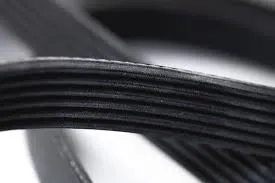- Arabic
- French
- Russian
- Spanish
- Portuguese
- Turkish
- Armenian
- English
- Albanian
- Amharic
- Azerbaijani
- Basque
- Belarusian
- Bengali
- Bosnian
- Bulgarian
- Catalan
- Cebuano
- Corsican
- Croatian
- Czech
- Danish
- Dutch
- Afrikaans
- Esperanto
- Estonian
- Finnish
- Frisian
- Galician
- Georgian
- German
- Greek
- Gujarati
- Haitian Creole
- hausa
- hawaiian
- Hebrew
- Hindi
- Miao
- Hungarian
- Icelandic
- igbo
- Indonesian
- irish
- Italian
- Japanese
- Javanese
- Kannada
- kazakh
- Khmer
- Rwandese
- Korean
- Kurdish
- Kyrgyz
- Lao
- Latin
- Latvian
- Lithuanian
- Luxembourgish
- Macedonian
- Malgashi
- Malay
- Malayalam
- Maltese
- Maori
- Marathi
- Mongolian
- Myanmar
- Nepali
- Norwegian
- Norwegian
- Occitan
- Pashto
- Persian
- Polish
- Punjabi
- Romanian
- Samoan
- Scottish Gaelic
- Serbian
- Sesotho
- Shona
- Sindhi
- Sinhala
- Slovak
- Slovenian
- Somali
- Sundanese
- Swahili
- Swedish
- Tagalog
- Tajik
- Tamil
- Tatar
- Telugu
- Thai
- Turkmen
- Ukrainian
- Urdu
- Uighur
- Uzbek
- Vietnamese
- Welsh
- Bantu
- Yiddish
- Yoruba
- Zulu
ກ.ກ. . 10, 2024 15:24 Back to list
Car drive belt replacement is essential for smooth engine operation and performance.
When it comes to the functionality and performance of a car, one crucial component that often goes unnoticed is the drive belt. The drive belt is responsible for transferring power from the engine to various parts of the vehicle, such as the alternator, air conditioning compressor, power steering pump, and water pump. Without a properly functioning drive belt, the car would not be able to run smoothly or efficiently.
There are several different types of drive belts used in cars, including V-belts, serpentine belts, and timing belts. Each type serves a specific purpose and must be regularly inspected and maintained to ensure optimal performance. One of the most common types of drive belts found in modern cars is the serpentine belt, which is a single, long belt that winds its way around multiple pulleys to power various engine components.
It is essential to regularly inspect the drive belt for signs of wear and tear, such as cracking, fraying, or stretching. A worn-out drive belt can lead to a host of problems, including overheating, loss of power steering, and battery drainage. If you notice any of these signs, it is crucial to replace the drive belt immediately to prevent further damage to the vehicle.
Replacing a drive belt is a relatively simple task that can be done by a trained mechanic or DIY enthusiast

drive belt for car. The first step is to locate the drive belt and determine the correct size and type needed for your specific vehicle. Next, use a belt tension gauge to measure the tension of the belt and ensure it is within the manufacturer's recommended range. Finally, carefully remove the old belt and install the new one, making sure it is properly aligned with the pulleys. Regular maintenance of the drive belt is key to ensuring the longevity and performance of your vehicle. It is recommended to inspect the drive belt every 30,000 to 60,000 miles, depending on the manufacturer's guidelines. Additionally, it is essential to keep the belt clean and free of debris to prevent premature wear and tear. In conclusion, the drive belt is a vital component of a car's engine system that must be regularly inspected and maintained to ensure optimal performance. By understanding the purpose of the drive belt and following proper maintenance procedures, you can keep your vehicle running smoothly and efficiently for years to come. Remember, a small investment in maintaining your drive belt can save you from costly repairs and breakdowns in the future.

drive belt for car. The first step is to locate the drive belt and determine the correct size and type needed for your specific vehicle. Next, use a belt tension gauge to measure the tension of the belt and ensure it is within the manufacturer's recommended range. Finally, carefully remove the old belt and install the new one, making sure it is properly aligned with the pulleys. Regular maintenance of the drive belt is key to ensuring the longevity and performance of your vehicle. It is recommended to inspect the drive belt every 30,000 to 60,000 miles, depending on the manufacturer's guidelines. Additionally, it is essential to keep the belt clean and free of debris to prevent premature wear and tear. In conclusion, the drive belt is a vital component of a car's engine system that must be regularly inspected and maintained to ensure optimal performance. By understanding the purpose of the drive belt and following proper maintenance procedures, you can keep your vehicle running smoothly and efficiently for years to come. Remember, a small investment in maintaining your drive belt can save you from costly repairs and breakdowns in the future.
Share:
Latest news
-
Korean Auto Parts Timing Belt 24312-37500 For Hyundai/Kia
NewsMar.07,2025
-
7PK2300 90916-T2024 RIBBED BELT POLY V BELT PK BELT
NewsMar.07,2025
-
Chinese Auto Belt Factory 310-2M-22 For BMW/Mercedes-Benz
NewsMar.07,2025
-
Chinese Auto Belt Factory 310-2M-22 For BMW/Mercedes-Benz
NewsMar.07,2025
-
90916-02660 PK Belt 6PK1680 For Toyota
NewsMar.07,2025
-
drive belt serpentine belt
NewsMar.07,2025

